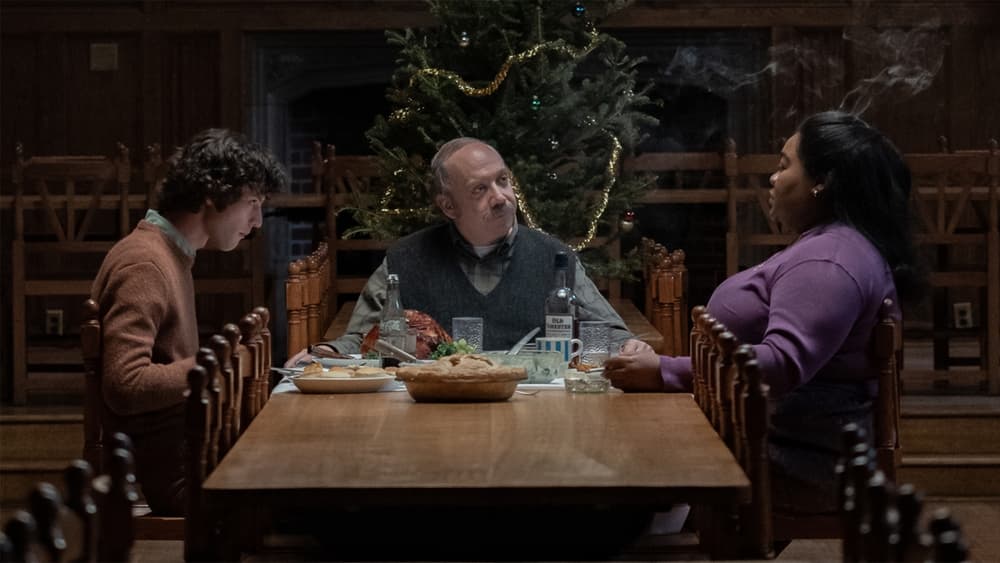Some people may be unwilling to give themselves to a film as openly sentimental as “The Holdovers.” Its overly fond look back at a specific time and place drenched in pretension and privilege could be too much for those looking for a more critical view of its setting. But it succeeds here because, at its core, that sentimentality is earnest. The film never feels like a cheap ploy to satisfy the audience’s desire to return to a specific type of 1970s cinema, if only because that audience doesn’t exist. Instead, it plays as a more subtle reflection on loneliness, youth, and mentorship, with the aesthetic and period setting used merely as a backdrop for its thematic content.
On the surface, the material is nothing out of the ordinary. It’s a classic odd couple situation — two people that appear as opposites have to stay with each other, drive each other insane, but eventually come to an understanding and mutual respect. This concept has been done over and over since the beginning of time — although it helps that we don’t get many of these kinds of middlebrow films aimed at adults anymore. But, it’s Alexander Payne’s execution of the simple, universal story that helps the film stand out among an overcrowded subgenre.
Despite not writing the script (or at least being credited with helping write it), Payne finds his way into the material and makes his mark through subtle but effective visual choices. The religious adherence to an early 70s aesthetic appears too much as the film starts with a vintage-looking opening credits sequence that includes an era-fitting Miramax logo. But that is quickly dispatched in favor of a less in-your-face grainy image. The noticeable aspects of the style are kept to the needle drops — which are obvious and often songs that have been used better in other films (I can think of multiple better uses of Cat Stevens’s “The Wind,” which meant at a crucial emotional moment I was thinking about “Rushmore” and “Almost Famous” instead). But Payne’s visual sense extends beyond creating a classic look and period setting. His use of warm colors creates a contrast with the harsh winter exteriors and plays as a visual representation of these characters’ emotional cores countering the angry, disenchanted facade they put up to deal with the world.
Of course, Payne’s greatest strength as a director has always been his work with actors. Here, he teams up with Paul Giamatti again after their stellar work together on “Sideways.” Giamatti gives another star turn thanks to Payne’s ability to bring out the actor’s furious energy and cynicism, creating a nice tonal balance with the more sappy aspects of the script. Underrated, though, is Payne’s work with young actors. Of course, there’s Reese Witherspoon’s iconic performance as Tracy Flick in “Election,” but as the young student Angus Tully, newcomer Dominic Sessa holds his own on-screen against Giamatti. He has the right amount of cockiness and emotional range to not be overpowered by Giamatti and pull off the wide-ranging, major emotional beats. Da’Vine Joy Randolph also gives a strong performance, able to assert herself and play off the sometimes cliche back-and-forth between Giamatti and Sessa in a way that makes it feel fresh. She nails the emotional core of her character’s storyline with grace and subtlety, able to convey so much through the tiniest look.
“The Holdovers” will likely be a major player at the upcoming Oscars — its crowd-pleasing bona fides and involvement of former Academy favorite Payne will keep it in every race. Whether or not its heartwarming qualities will withstand the vitriolic Academy Awards discourse with several nominations (or, god forbid, wins) remains to be seen — it hasn’t exactly helped the reputation of similarly slight but charming efforts like “CODA.” Regardless, “The Holdovers” will be a delightful, familiar film to return to, maybe even working into my holiday film rotation soon.

